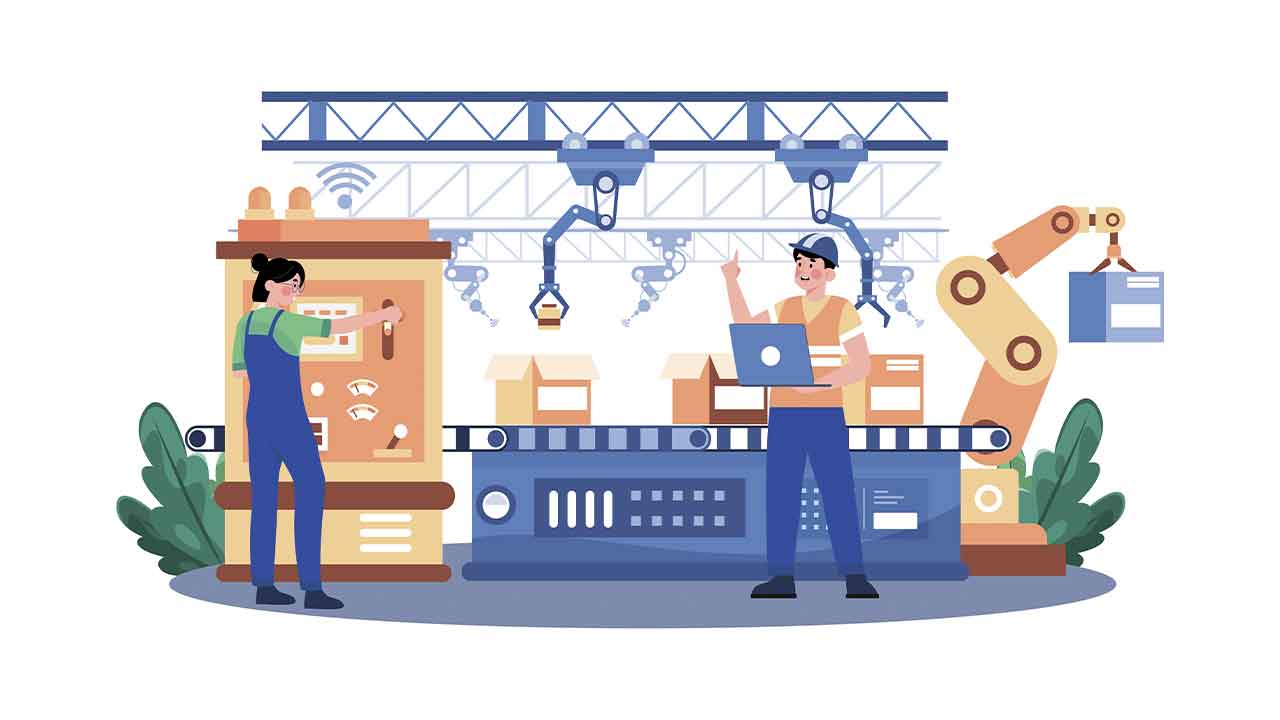Why engineering teams are shutting down industrial IoT projects
Engineers do amazing things every day. Their efforts radically transform our collective future. Imagine describing industrial operations today to someone living just one hundred years ago. Modern manufacturing facilities and energy production systems are downright miracles. All manner of goods are produced more efficiently than ever. Almost anything can be transported effortlessly around, and even off the planet. Through it all, the hot side stays hot. The cool side stays cool. Yet despite the previous accomplishments of their profession, engineering teams are unexpectedly shutting down industrial IoT projects at an alarming rate.
If you lead a traditional industrial business with aspirations for a digital future, you are at risk. Here is how the process usually begins. You understand the importance of digital transformation in the enterprise, and you feel behind the curve. While you’re not sure exactly what your need, you know you need to get started. You’ll give your engineering team a mission to deliver an industrial IoT solution for your organization. You won’t provide them many details, but they’ll accept your challenge and run with it anyway. After all, engineers gonna engineer.
Then, in a few months, a year, or maybe even two years, they’ll come to you with the bad news. They’ve done their best, but the system just can’t do what the sales, service, and product teams are now asking for. Data scientists don’t have all the information they need to build useful models. Recommendations from analytics tools are consistently inconclusive. Furthermore, the Finance and IT teams are up in arms over the costs of operating the system – and how to account for it. Worse, it’s just not designed to meet the rapidly expanding list of customer requests for new charts, notifications, and integrations. They’re going to shut it all down. They need to start over.
What went wrong?
The data made me do it
Everyone is talking about digital transformation, Industry 4.0, and AI. Nobody wants to be left behind. So you tell your engineering team to choose an industrial IoT platform and build a connected system. They start by looking around at technology options, asking vendors about features and pricing. What does your platform do? How does it do that? What development services do you provide? How much does it cost? What. What. How. How. All important questions. But journeys that begin with them as the first step become thousand-mile paths to disaster.
Starting with why
Successful digital transformation projects begin differently. None of the answers to what and how matter outside the context of why you asked your engineering team to find an industrial IoT platform in the first place. Yet few engineering managers are supplied with this knowledge upfront. What are the business outcomes you seek, and what is their value to your enterprise? How will they benefit your customers? Furthermore, what changes will be required across your organization to fully commercialize the solution, both internally and externally, that your engineers must support?
If you’re still trying to figure these out – that’s okay. We can help you with that. But it’s impossible for your engineering team to make a good decision on the right tools without a clear understanding of the job at hand.
The internet of nothing
First, how can they know whether an industrial IoT platform has the right features without clear, prioritized user stories? Second, how will they determine the right price? That requires knowledge – or at least an initial estimation – of how much each scenario is worth. Your engineering team can’t possibly guess how much is appropriate to invest in development of your connected system without a clear understanding of its potential value.
When you don’t provide an explicit denominator of expected revenue increase (or savings) for the ROI equation, you send an implicit cost numerator of “as little as possible.” That’s a dangerous guideline. Nebulous goals, undefined business requirements, and vague user stories are the fertile fields in which you sow the seeds of your digital demise.
They’ll work hard and fill in the blanks themselves. That’s what good engineers do. They’ll find creative ways to get data from your equipment into the cloud – even onto your phone. Your new digital platform will have all the features your engineers think are important – each component and service supplied by the lowest bidder.
Now let’s start transforming that data into dollars.
Wake up, time to die
Your system is up and running. To begin, you instruct your sales and service teams to leverage the new dashboards and alerts to increase sales of new equipment, aftermarket parts, and consumables. You want to see increasing margins for warranty and maintenance contracts. After that, you feed your data scientists and analytics tools new streams of incoming data and ask what decisions should be made. Then, the problems begin. Soon, everyone is making requests for new features, more connected product lines, and additional data types to accomplish their goals. Most want more. Some want different. Many need better integration with existing business workflows, CRMs, and ERP systems.
Then, there are your customers. They want to know how the new system will improve their bottom line. Nobody asked them what features they wanted. Nobody asked why they wanted them. As a result, they’ll probably just tell you to send all your raw machine data to their existing automation system or plant historian. You can keep your mobile app. They’re certainly not going to pay extra for it. Thanks a lot, Gartner.
The end of the beginning
Immediately, your engineering team will make valiant attempts to adapt the system to meet these new requirements. They’ll get a few in without too much trouble. Next, they’ll start adding patches and hacks they’re not proud of, but get the job done. Pretty soon though, they’ll hit a set of change requests that are damn near impossible without rearchitecting the whole thing.
Your engineers are intelligent, hard-working people. They built something that worked. But you gave them engineering tasks rather than business goals. You didn’t clearly describe the job, and they gave you the wrong tool.
Industrial IoT is no longer a technology problem
You caused your engineering team to focus on the wrong things. Today, there are plenty of options available for building industrial IoT solutions. This wasn’t true even just a few years ago, but it is now. However, each option was created (by other teams of engineers) for enabling very different business scenarios and value propositions. Your engineering team delivered what they thought was needed. They built what they thought you wanted. Nobody questioned their assumptions.
Today, industrial IoT is a product management problem. It’s a company culture problem. It’s an executive leadership problem. But it’s no longer a technology problem. Unless you understand – and clearly articulate to your engineering team – why you want to connect your equipment, what scenarios must be enabled, and how you will measure success, the system will inevitably fail to create sustainable value for your organization and your customers. How could it be any other way?
Creating a digital success plan
Maybe you don’t need to worry. Your engineering team will get it right eventually if you keep pouring money into the project. Maybe all your competitors will make the same mistakes. But there’s a chance one or two of them will get it right.
What if they start with a different approach? First, they’ll take the time to develop a clear theory of success and plan for validating assumptions from the beginning. Second, they’ll build a coalition across their enterprise to ensure business and technical requirements are clear ahead of time. Roles, goals, and responsibilities will be noted and understood. Next, they might even conspire with customers – perhaps some of your customers – to identify game-changing opportunities before building anything at all. Not only would this dialogue drive eventual customer demand, it would inform critical decisions about the architecture and design of the system itself.
Imagine what will happen if any of your competitors are right now following a path of iteratively delivering and testing for new data-driven value across their organization and customer base? They’re going to enable new business models and generate complete solutions that you can’t compete with. They’ll become such critical contributors to their customers’ success that you’ll be locked out entirely, just another vendor of commodity goods in a connected world.
Time to get real
It’s up to you. Your engineers are magicians. However, you need to tell them what to pull out of the hat, and why. The last thing you want are more rabbits on your carrot farm. We’d love to share with you an approach for developing clear business goals, and help you find the path to delivering digital solutions that drive real business value. Most importantly, we’ll go beyond the system itself and accelerate new, durable capabilities across your organization.
Digital transformation isn’t just a buzzword – it’s a process for creating a sustainable competitive advantage in a connected world. We’ll show you how to truly empower your engineering teams and help your entire organization work together toward maintaining industry leadership. Are you ready?
Originally this article was published here.
![]() This article was written by Marc Phillips, the Director of Marketing at Bright Wolf, a leading IoT technology provider and system integrator helping Fortune 1000 companies design, develop, and deploy Enterprise IoT systems and connected product solutions.
This article was written by Marc Phillips, the Director of Marketing at Bright Wolf, a leading IoT technology provider and system integrator helping Fortune 1000 companies design, develop, and deploy Enterprise IoT systems and connected product solutions.



